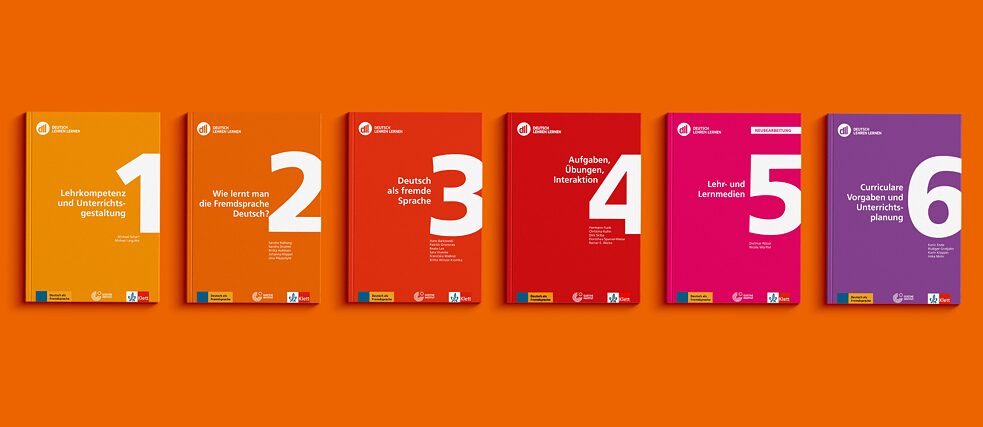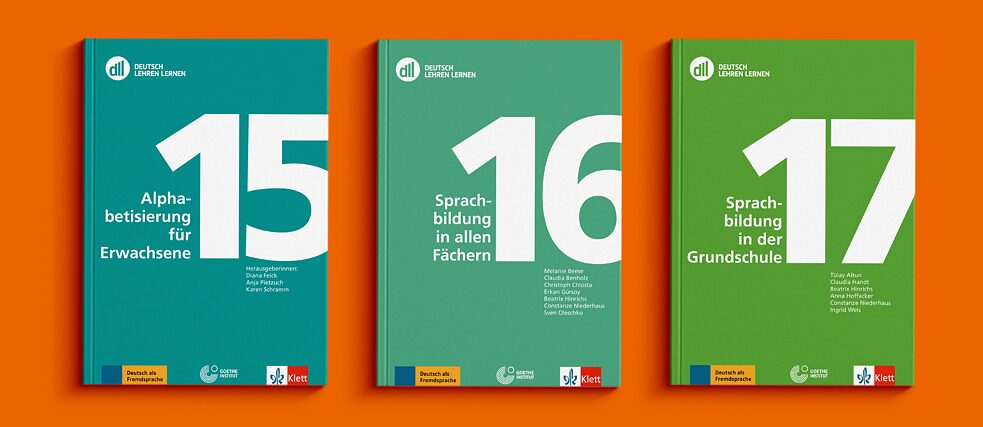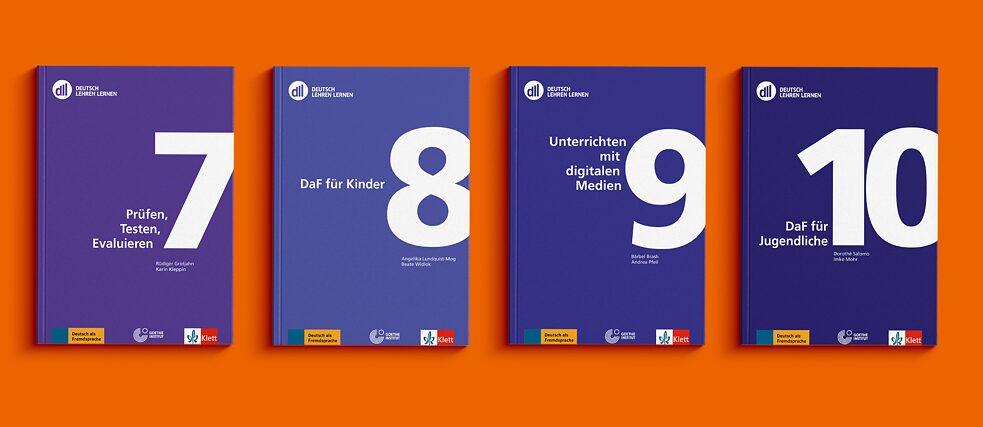DLL 1: Teaching competences and lesson planning
Our decisions as teachers determine what goes on in our classrooms. What informs those decisions? How do we define good teaching? What are the unique challenges we face? How do we create and sustain an anxiety-free, motivating, and supportive learning environment? How do we steer the learning process and accompany our students along the path to success? How can we as teachers further develop ourselves professionally?
DLL 2: Learning German as a foreign language
The students themselves, along with everything they bring with them into the classroom, greatly influence not only how they learn, but how we teach. The better we get to know our students, the better we are able to support and guide them by adapting our instruction to their specific needs and abilities.
DLL 3: German as a foreign language
This unit focuses on the language we teach itself. What is characteristic of German in terms of its vocabulary, grammar, pronunciation, and practical use? What must we know in order to explain to students how German works so that communication is possible? How is German presented in learning materials and how can we best teach vocabulary, grammar, and pronunciation?
DLL 4: Assignments, Exercises, and Interaction
Assignments, exercises, and interaction in the classroom are ways to practice using the language in the real world. This unit shows you what this looks like in the modern language classroom by means of speaking and writing.
DLL 5: Teaching and Learning Media
In language lessons, teaching and learning media support the learning process right from the start. The wide selection of media makes communication possible in a way that reflects reality outside the classroom for many learners. It’s important that teachers are able to select and curricularise teaching and learning media so that it’s suitable for their target group, and that they know how to adapt supplementary material for their own lessons.
DLL 6: Curricular Requirements and Lesson Planning
What do we refer to and rely on when lesson planning? What learning goals and proficiencies serve as our foundation? How do we plan different units? How do we design phases of the lesson in a logical sequence? How we plan is influenced by guidelines and by methodological and didactic principles. In this unit, you will develop up-to-date points of reference for your daily work as a teacher and learn about new innovations in the field of lesson planning.
DLL 7: Assessment Tools
What function do assessments (e.g. tests, exams, etc.) serve and what principles and standards should they adhere to? How do we develop effective assessment tools for our own classrooms? How do we use the results of these tools to improve the learning process? These are the questions we explore in this unit.
DLL 8: German for Children
The focal points of this unit are language acquisition and the learning process of early childhood, facets of developmental psychology, skill-building, and, above all, methodological and didactic aspects of teaching children.
DLL 9: Teaching with Digital Media
In this unit of DLL, participants will learn how to use their digital media skills to enhance their teaching. This unit will deal with building a basic understanding of digital media based teaching and learning, its practical application and pedagogical integration into lessons.
DLL 10: German for Teens
German for teens is specifically designed for German teachers of adolescents ages 12 to 19.
This unit explores the latest findings in scientific research regarding cognitive, physical, social, and linguistic developmental processes in adolescents, and their relevance to language learning. Results of a survey of teenagers illustrate the role of motivation in the learning process as well as their ideas about what makes a good German teacher.
DLL 15: Literacy for Adults
This unit contains a comprehensive compilation of current research-based and practical strategies for teaching literacy skills to adult migrants in Germany. It familiarizes teachers with the unique demands and challenges of developing literacy in a second language and is suited for instructors experienced with the target group as well as those new to the field.
This unit not only illustrates in detail the theoretical foundations of working with inexperienced readers/writers, but provides a number of concrete strategies for both beginners and advanced learners as well.
DLL 16: Language learning in all subjects
This unit examines the question of how to promote language learning in subjects other than German. It is designed not only for teachers of students with migrant backgrounds, but for educators of all subjects working to improve German as an academic language. Other themes explored in this unit include culturally relevant teaching and multilingualism in the classroom. You will discuss real-world examples with the help of interviews and video clips from actual lessons.
DLL 17: LANGUAGE LEARNING AT PRIMARY SCHOOL
Participation in education and learning success are strongly dependent on language competence (capacity to learn). For this reason it is important for learners in school – particularly at primary level – to develop these capabilities rapidly and to a high standard. It isn’t just a matter of boosting linguistic ability in German as a teaching language, it’s also essential to value, include and reinforce the first language(s) of all children. Teachers have the tough challenge of embracing the language diversity in their classroom and supporting all children in terms of a comprehensive language education.
Digitale Bausteine in den Basiseinheiten
Auf der Lernplattform des Goethe-Instituts sind die Basis-DLL-Einheiten (2 - 6; DLL 1 folgt in Kürze) um Digitale Bausteine ergänzt. Darin beschäftigen sich die Teilnehmenden unserer DLL-Fortbildungen anhand ausgewählter Aspekte damit, welche Rolle digitale Medien bei den Themen der jeweiligen DLL-Einheit spielen und lernen digitale Umsetzungsbeispiele für den Präsenz- oder Onlineunterricht kennen.
Die digitalen Bausteine stellen dabei konkrete Bezüge zu den Inhalten der jeweiligen DLL-Einheit her.
Die digitalen Bausteine sind ausschließlich online und nicht im Printformat verfügbar.




